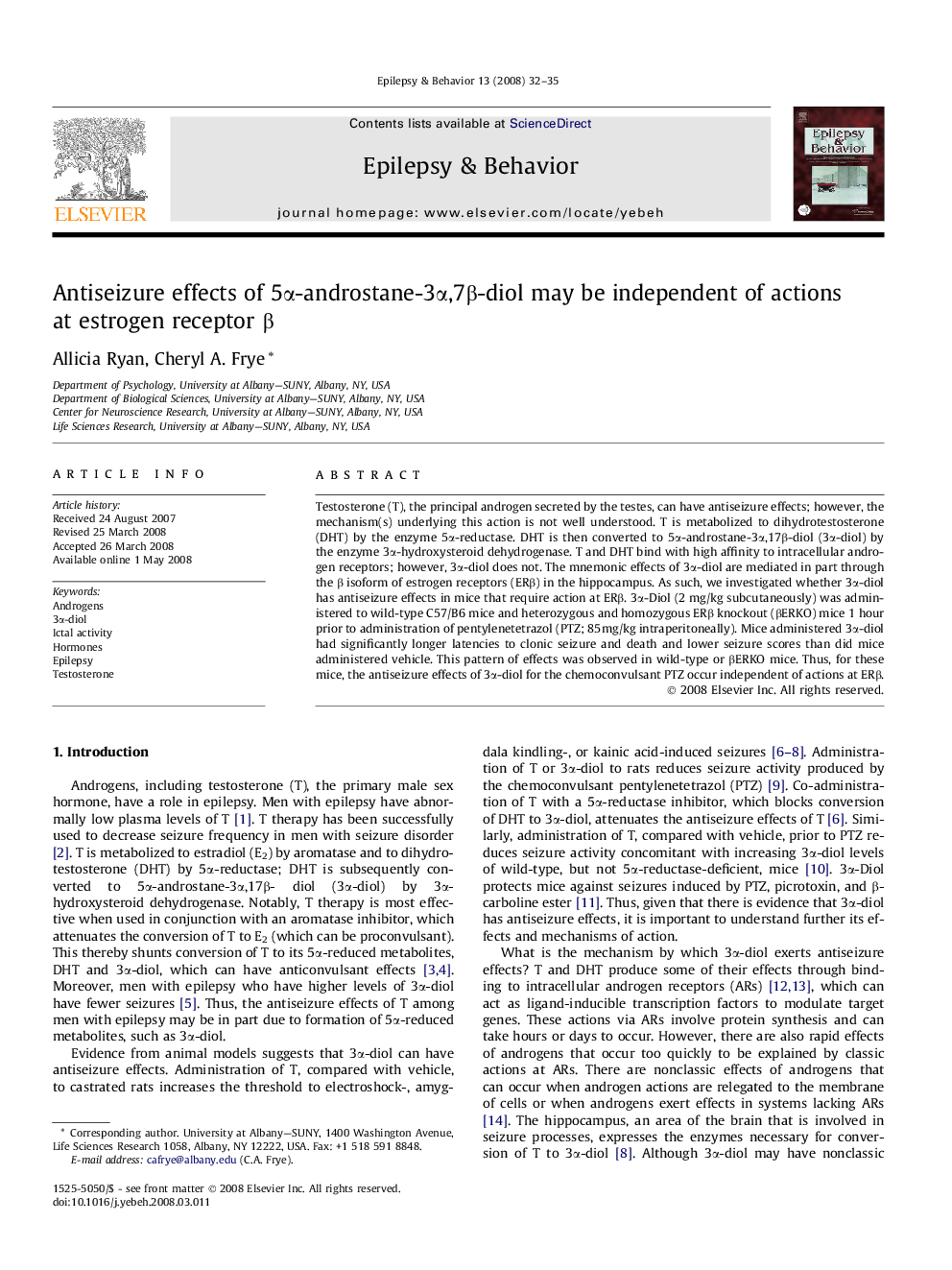| Article ID | Journal | Published Year | Pages | File Type |
|---|---|---|---|---|
| 3050932 | Epilepsy & Behavior | 2008 | 4 Pages |
Abstract
Testosterone (T), the principal androgen secreted by the testes, can have antiseizure effects; however, the mechanism(s) underlying this action is not well understood. T is metabolized to dihydrotestosterone (DHT) by the enzyme 5α-reductase. DHT is then converted to 5α-androstane-3α,17β-diol (3α-diol) by the enzyme 3α-hydroxysteroid dehydrogenase. T and DHT bind with high affinity to intracellular androgen receptors; however, 3α-diol does not. The mnemonic effects of 3α-diol are mediated in part through the β isoform of estrogen receptors (ERβ) in the hippocampus. As such, we investigated whether 3α-diol has antiseizure effects in mice that require action at ERβ. 3α-Diol (2 mg/kg subcutaneously) was administered to wild-type C57/B6 mice and heterozygous and homozygous ERβ knockout (βERKO) mice 1 hour prior to administration of pentylenetetrazol (PTZ; 85mg/kg intraperitoneally). Mice administered 3α-diol had significantly longer latencies to clonic seizure and death and lower seizure scores than did mice administered vehicle. This pattern of effects was observed in wild-type or βERKO mice. Thus, for these mice, the antiseizure effects of 3α-diol for the chemoconvulsant PTZ occur independent of actions at ERβ.
Related Topics
Life Sciences
Neuroscience
Behavioral Neuroscience
Authors
Allicia Ryan, Cheryl A. Frye,
